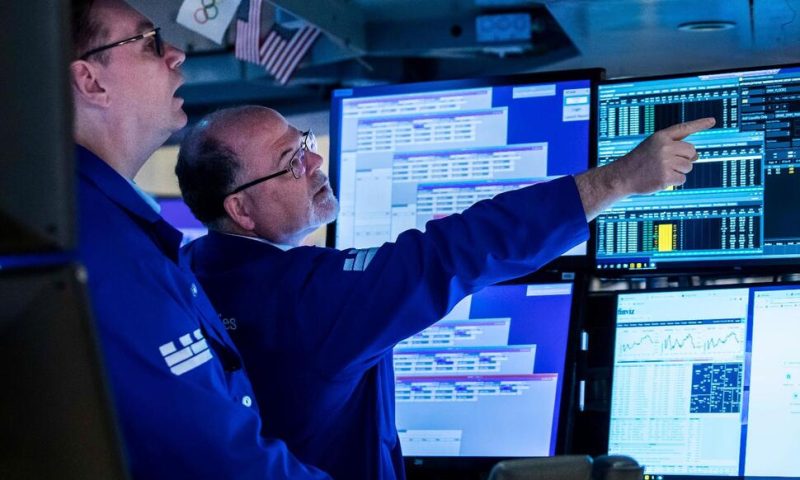Stocks rose steadily throughout the day and ended Tuesday with broad gains as traders got back to buying again after a mostly miserable few weeks on Wall Street.
NEW YORK — Stocks bounced back after a lackluster start to the week with a broad rally Tuesday as traders got back to buying again after a mostly miserable few weeks on Wall Street.
The S&P 500 rose 2%, with more than 90% of the companies in the benchmark index notching gains. The Dow Jones Industrial Average rose 1.3% and the Nasdaq gained 2.8%.
Big tech stocks led the rally, with Apple and Microsoft among the biggest winners. Small-company stocks rose more than the rest of the market, a signal that investors are feeling bullish about the economy. Treasury yields rose.
Investors welcomed an encouraging report on retail sales and reviewed mixed batch of earnings updates from several big retailers. The solid rebound for stocks comes as the broader market struggles to break a six-week long slump that has been interrupted at times by sharp rallies.
“All three indices are down double digits for the year, so we can’t get super excited about this,” said Sylvia Jablonski, chief investment officer at Defiance ETFs. “But I think it’s a good day, and good news, particularly on the consumer, brings investors into the market.”
The S&P 500 rose 80.84 points to 4,088.85. The Dow gained 431.17 points to 32,654.59. The Nasdaq added 321.73 points to 11,984.52. The Russell 2000 index of smaller companies climbed 56.87 points, or 3.2%, to 1,840.30.
The highly volatile technology accounted for a big slice of the S&P 500’s gains. Apple rose 2.5% and Microsoft rose 2%. Pricey stock values for many big technology companies give the sector more weight in pushing the broader market up and down.
Health care companies also helped lift the market. Abbott Laboratories rose 4.4% after the company made a deal with regulators to ramp up production of baby formula amid a shortage.
Banks gained ground along with rising bond yields, which they rely on to charge more lucrative interest on loans. The yield on the 10-year Treasury rose to 2.99% from 2.88% late Monday. JPMorgan Chase rose 3.3%.
Paramount soared 15.3% after Warren Buffett’s Berkshire Hathaway disclosed a new stake in the media company.
The Commerce Department said U.S. retail sales rose 0.9% in April. The solid increase was driven by higher sales of cars, electronics, and at more spending at restaurants. The upbeat report helps allay some concerns on Wall Street about persistently high inflation crimping consumer spending and about the possibility that the economy could slip into a recession.
“The retail sales report really gave a boost of confidence to investors that consumers are doing well,” said Chris Zaccarelli, chief investment officer for Independent Advisor Alliance. “As long as consumers stay strong the chance of us going into a recession in 2022 are very low.”
Inflation is at a four-decade high, driven by demand for goods outpacing supplies in the aftermath of the pandemic. Supply chain problems have prompted businesses to raise prices on everything from food to clothing. Rising energy prices following Russia’s invasion of Ukraine worsened pressure from inflation, as did China’s strict lockdown measures over the last month as it faces a resurgence of COVID-19 cases in major cities.
Walmart, the nation’s largest retailer, fell 11.4%, its biggest percentage decline since 1987, after reporting disappointing earnings and trimming its profit forecast for the year, partly because of inflation pressures.
Several other retailers also lost ground. Target fell 1.4% and Bath & Body Works slid 2.9%. Supermarket operator Kroger fell 3.7%.
Central banks have been shifting policies to help fight inflation. The Federal Reserve is gradually pushing its benchmark short-term interest rate off its record low near zero, where it spent most of the pandemic. Investors are concerned that the central bank could cause a recession if it raises rates too high or too quickly and are watching for comments by Fed officials that might provide insight into the U.S. economic outlook and future policy moves.

